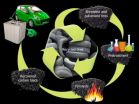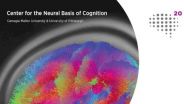(Press-News.org) OAK RIDGE, Tenn., Aug. 27, 2014 – Recycled tires could see new life in lithium-ion batteries that provide power to plug-in electric vehicles and store energy produced by wind and solar, say researchers at the Department of Energy's Oak Ridge National Laboratory.
By modifying the microstructural characteristics of carbon black, a substance recovered from discarded tires, a team led by Parans Paranthaman and Amit Naskar is developing a better anode for lithium-ion batteries. An anode is a negatively charged electrode used as a host for storing lithium during charging.
The method, outlined in a paper published in the journal RSC Advances, has numerous advantages over conventional approaches to making anodes for lithium-ion batteries.
"Using waste tires for products such as energy storage is very attractive not only from the carbon materials recovery perspective but also for controlling environmental hazards caused by waste tire stock piles," Paranthaman said.
The ORNL technique uses a proprietary pretreatment to recover pyrolytic carbon black material, which is similar to graphite but man-made. When used in anodes of lithium-ion batteries, researchers produced a small, laboratory-scale battery with a reversible capacity that is higher than what is possible with commercial graphite materials.
In fact, after 100 cycles the capacity measures nearly 390 milliamp hours per gram of carbon anode, which exceeds the best properties of commercial graphite. Researchers attribute this to the unique microstructure of the tire-derived carbon.
"This kind of performance is highly encouraging, especially in light of the fact that the global battery market for vehicles and military applications is approaching $78 billion and the materials market is expected to hit $11 billion in 2018," Paranthaman said.
Anodes are one of the leading battery components, with 11 to 15 percent of the materials market share, according to Naskar, who noted that the new method could eliminate a number of hurdles.
"This technology addresses the need to develop an inexpensive, environmentally benign carbon composite anode material with high-surface area, higher-rate capability and long-term stability," Naskar said.
INFORMATION:
ORNL plans to work with U.S. industry to license this technology and produce lithium-ion cells for automobile, stationary storage, medical and military applications. ORNL has posted the solicitation titled, "Low-Cost, Graphite Anodes For Lithium-Ion Batteries," in FedBizOpps. The solicitation (#ORNL-TT-2014-08) closes Sept. 15. Other potential uses include water filtration, gas sorption and storage.
Paranthaman and Naskar, authors of a paper titled "Tailored Recovery of Carbons from Waste Tires for Enhanced Performance as Anodes in Lithium-Ion Batteries," envision batteries featuring this technology being highly marketable. The paper is available at http://pubs.rsc.org/en/content/articlelanding/2014/ra/c4ra03888f#!divAbstract.
Co-authors are Zhonghe Bi, Yunchao Li, Sam Akato, Dipendu Saha, Miaofang Chi and Craig Bridges. They are working with David Wood and Jianlin Li on a pilot manufacturing process to scale up the recovery of material and demonstrate applications as anodes for lithium-ion batteries in large-format pouch cells. Researchers expect these batteries to be less expensive than those manufactured with commercial carbon powders.
The research on conversion of recycled tires to graphite powders was funded by the laboratory's Technology Innovation Program while the research on battery fabrication and electrochemical testing was sponsored by DOE's Office of Basic Energy Sciences, Materials Sciences and Engineering Division. Transmission electron microscopy research was supported by ORNL's Center for Nanophase Materials Sciences, a DOE Office of Science user facility.
UT-Battelle manages ORNL for the Department of Energy's Office of Science. DOE's Office of Science is the single largest supporter of basic research in the physical sciences in the United States, and is working to address some of the most pressing challenges of the time. For more information, please visit science.energy.gov.
Image: http://www.ornl.gov/Image%20Library/Main%20Nav/ORNL/News/News%20Releases/2014/Recycled-Tire-Battery-Schematics_hr.jpg?code=925ce247-3526-45e6-93cb-a3194c04194f
Cutline: ORNL researchers' goal is to scale up the recovery process and demonstrate applications as anodes for lithium-ion batteries in large-format pouch cells.
NOTE TO EDITORS: You may read other press releases from Oak Ridge National Laboratory or learn more about the lab at http://www.ornl.gov/news. Additional information about ORNL is available at the sites below:
Twitter - http://twitter.com/ornl
RSS Feeds - http://www.ornl.gov/ornlhome/rss_feeds.shtml
Flickr - http://www.flickr.com/photos/oakridgelab
YouTube - http://www.youtube.com/user/OakRidgeNationalLab
LinkedIn - http://www.linkedin.com/companies/oak-ridge-national-laboratory
Facebook - http://www.facebook.com/Oak.Ridge.National.Laboratory
Rubber meets the road with new ORNL carbon, battery technologies
2014-08-27
ELSE PRESS RELEASES FROM THIS DATE:
Gang life brings deep health risks for girls
2014-08-27
Being involved in a gang poses considerable health-related risks for adolescent African American girls, including more casual sex partners and substance abuse combined with less testing for HIV and less knowledge about preventing sexually transmitted diseases, according to a new study.
The findings come from a questionnaire survey with 188 African American females, ages 13 to 17, who were incarcerated in a short-term detention facility in Atlanta. The data showed that low self-esteem, emotional problems, trauma history, low parental monitoring, friends who engage in risky ...
Kessler Foundation researchers publish first study of brain activation in MS using fNIRS
2014-08-27
West Orange, NJ. August 27, 2014. Using functional near infrared spectroscopy (fNIRS), Kessler Foundation researchers have shown differential brain activation patterns between people with multiple sclerosis (MS) and healthy controls. This is the first MS study in which brain activation was studied using fNIRS while participants performed a cognitive task. The article, "Neuroimaging and cognition using functional near infrared spectroscopy (fNIRS) in multiple sclerosis," was published online on June 11 by Brain Imaging and Behavior. Authors are Jelena Stojanovic-Radic, PhD, ...
Water 'thermostat' could help engineer drought-resistant crops
2014-08-27
DURHAM, N.C. -- Duke University researchers have identified a gene that could help scientists engineer drought-resistant crops. The gene, called OSCA1, encodes a protein in the cell membrane of plants that senses changes in water availability and adjusts the plant's water conservation machinery accordingly.
"It's similar to a thermostat," said Zhen-Ming Pei, an associate professor of biology at Duke.
The findings, which appear Aug. 28 in the journal Nature, could make it easier to feed the world's growing population in the face of climate change.
Drought is the ...
Detecting neutrinos, physicists look into the heart of the sun
2014-08-27
AMHERST, Mass. – Using one of the most sensitive neutrino detectors on the planet, an international team of physicists including Andrea Pocar, Laura Cadonati and doctoral student Keith Otis at the University of Massachusetts Amherst report in the current issue of Nature that for the first time they have directly detected neutrinos created by the "keystone" proton-proton (pp) fusion process going on at the sun's core.
The pp reaction is the first step of a reaction sequence responsible for about 99 percent of the Sun's power, Pocar explains. Solar neutrinos are produced ...
Flexing the brain: Why learning tasks can be difficult
2014-08-27
VIDEO:
Learning a new skill is easier when it is related to an ability we already have. For example, a trained pianist can learn a new melody easier than learning how...
Click here for more information.
PITTSBURGH—Learning a new skill is easier when it is related to an ability we already have. For example, a trained pianist can learn a new melody easier than learning how to hit a tennis serve.
Scientists from the Center for the Neural Basis of Cognition (CNBC) – a joint program ...
Stanford researchers work to understand gene expression across organisms
2014-08-27
Fruit flies and roundworms have long been used as model organisms to learn more about human biology and disease. Now, researchers at the Stanford University School of Medicine have found that although many aspects of regulatory networks are conserved among the three distantly related organisms, other differences have emerged over evolutionary time.
These differences may explain why, for example, worms slither, flies fly and humans walk on two legs, even though they all use the same basic genetic building blocks.
"We're trying to understand the basic principles that ...
Evolution used similar molecular toolkits to shape flies, worms, and humans
2014-08-27
Although separated by hundreds of millions of years of evolution, flies, worms, and humans share ancient patterns of gene expression, according to a massive Yale-led analysis of genomic data.
Two related studies led by scientists at Harvard and Stanford, also published Aug. 28 in the same issue of the journal Nature, tell a similar story: Even though humans, worms, and flies bear little obvious similarity to each other, evolution used remarkably similar molecular toolkits to shape them.
However, the same Yale lab reports in a separate paper published in the Proceedings ...
Neuroscientists reverse memories' emotional associations
2014-08-27
CAMBRIDGE, MA -- Most memories have some kind of emotion associated with them: Recalling the week you just spent at the beach probably makes you feel happy, while reflecting on being bullied provokes more negative feelings.
A new study from MIT neuroscientists reveals the brain circuit that controls how memories become linked with positive or negative emotions. Furthermore, the researchers found that they could reverse the emotional association of specific memories by manipulating brain cells with optogenetics — a technique that uses light to control neuron activity.
The ...
Scientists map the 'editing marks' on fly, worm, human genomes
2014-08-27
The genome we inherited from our parents shapes many aspects of our lives. But in addition to our genome we have an epigenome that is set during development, but can be altered by our lifestyle habits and environmental exposures—and perhaps by those of our parents and grandparents.
The epigenome consists of chemical tags on our DNA and supporting proteins that determine whether genes are expressed or silenced.
This means we are deeply responsible for our own health, but also that it may be possible to diagnose and treat the many diseases caused by the deregulation of ...
Researchers switch emotion linked to memory
2014-08-27
Recalling an emotional experience, even years later, can bring back the same intense feelings. Researchers from the RIKEN-MIT Center for Neural Circuit Genetics revealed the brain pathway that links external events to the internal emotional state, forming one memory by engaging different brain areas. The study published in the journal Nature, also demonstrates that the positive or negative emotional valence of memory can be reversed during later memory recall.
The research team, led by Dr. Susumu Tonegawa, was interested in how brain structures like the hippocampus ...



